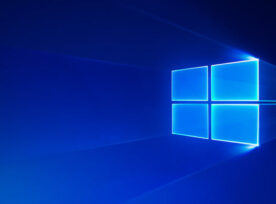The field of AI-generated content has been growing since 2020. I personally never paid much attention until recently as more and more headlines are hitting the news and people I know are creating AI art. While there is some great content being produced, it has led me to ask many questions. Ethics of AI-Generated Content […]
Blogs from this Author
Digital Accessibility – Using a Screen Reader
I have heard many people say, “I’ll just download a screen reader and test that bug”. Using a screen reader takes time and practice to use in a similar way that a user with a disability would use the tool. It’s important to know the keyboard shortcuts as well as understanding how to use them […]
Docker Bootcamp – Understanding Performance and Performance Tuning
Welcome back to docker bootcamp. In a previous post, we learned how to set resource limits for our containers. In this post, we will dig deep into performance. We’ll start with a brief history lesson about CPUs and hyperthreading then move on to an example that will help explain how different CPUs can impact performance. […]
Docker Bootcamp – Debug Windows Containers
Welcome back to docker bootcamp. In the previous post, we learned how to switch from Linux containers to Windows containers. In this post we will create a new .net project and deploy to a container. We will also see how to attach the debugger to the code running inside the container. The IIS image we […]
Docker Bootcamp – Windows Containers
Welcome back to Docker Bootcamp. Up to this point, all the examples we’ve gone through have used Linux containers. In this post, we’ll switch to Windows containers. All the Docker commands you’ve learned will still work. But now we’ll have access to Windows, PowerShell, and Internet Information Services (IIS) to run .net-based applications. Examples Switch […]
Docker Bootcamp – Docker Use Cases
Welcome back to Docker Bootcamp. We’ve learned a lot about how to use Docker in this series. In this post, we’ll look at when to use Docker. Docker is a great tool, but as with any technology, you should make sure it is the right tool for the job you are trying to accomplish. Why […]
Docker Bootcamp – Using Docker Compose
Welcome back to Docker Bootcamp. In this post, we’ll look at Docker Compose to configure and run multiple dependent containers. Looking back at my first post about linking containers, we used the Docker run command along with an environment variables text file to start two containers. It was important to start the database container before […]
Docker Bootcamp – Resource Limits
Welcome back to Docker Bootcamp. In this post, we’ll look at setting resource limits on containers. By default, containers have full access to the host CPU and RAM just like a regular application installed and running on the host machine. Docker gives us control over how much CPU and RAM each container can consume. Multiple […]
Docker Bootcamp – Linking Multiple Containers Part 2
Welcome back to Docker Bootcamp. In this post, we’ll revisit the topic of linking multiple containers. We’ll discover how to link containers using Docker’s network features that we’ve discussed in previous posts. In part one, we used the link flag to connect two containers. The link flag is considered a legacy feature and could eventually […]
Docker Bootcamp – Networking Part 4
Welcome back to Docker Bootcamp. In the previous post on networking, we modified our container’s network configurations using flags on the create or run command. Here we will create a user-defined network and set a specific IP address on our container. Terminology Classless Inter-Domain Routing (CIDR) – A notation representing a network identifier and the […]
Docker Bootcamp – Networking Part 3
Welcome back to Docker Bootcamp. In the previous post on networking, we mapped ports in the container back to the host and connected to services running inside the container. Here we will set custom DNS and hostnames. Using these options modifies the network configurations inside the container in various ways. Terminology Domain Name Service (DNS) […]
Docker Bootcamp – Networking Part 2
Welcome back to Docker Bootcamp. In this post, we’ll take another look at networking. In the first post on networking, we looked at the different types of network and container isolation types available through docker. Here we will map ports in the container back to the host and connect to services running inside the container. […]











